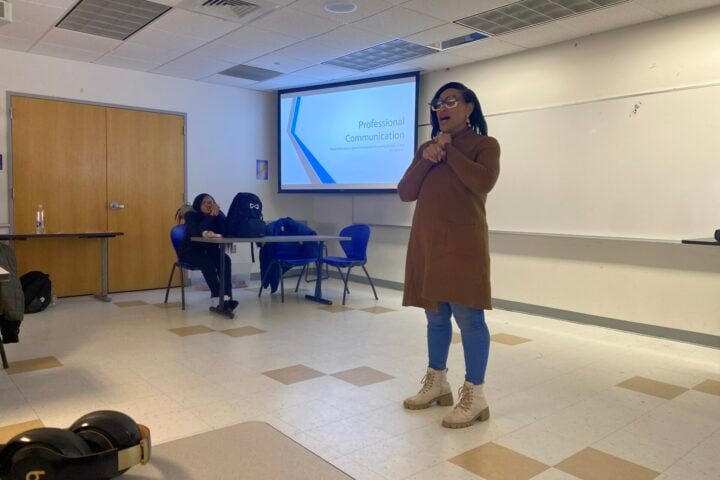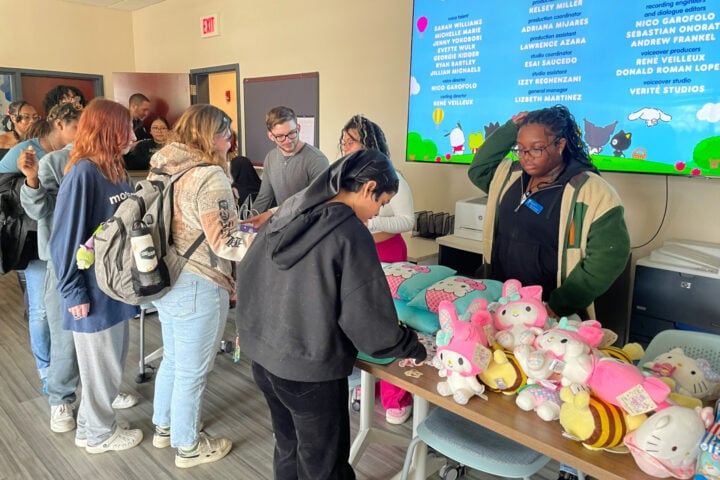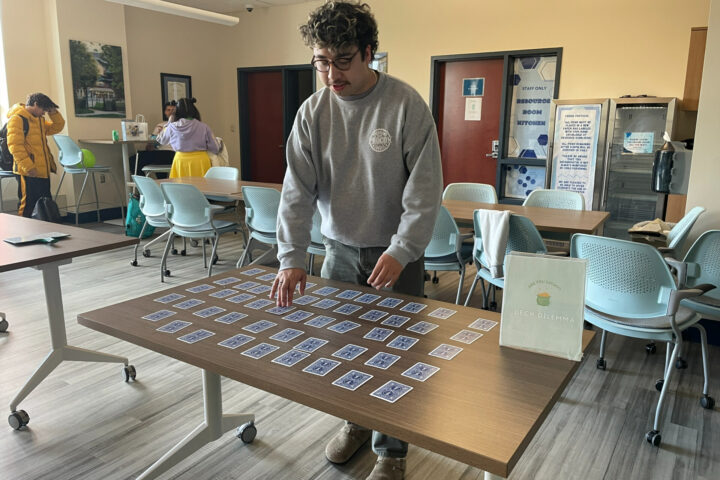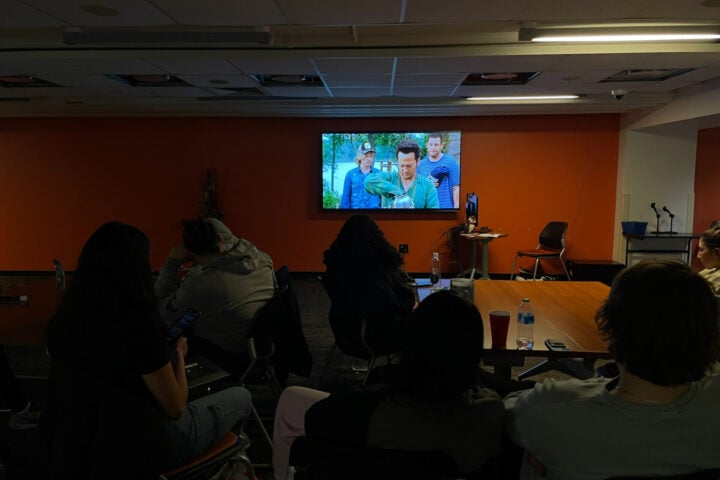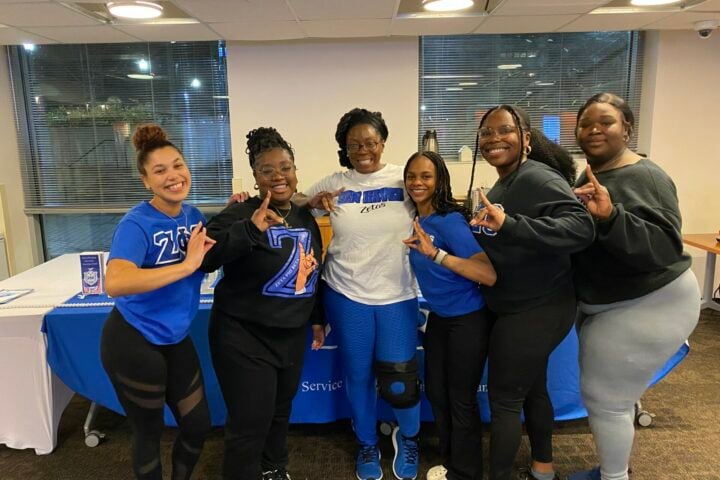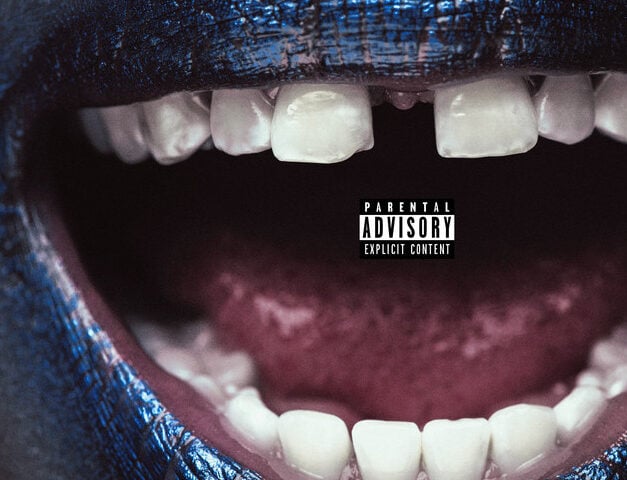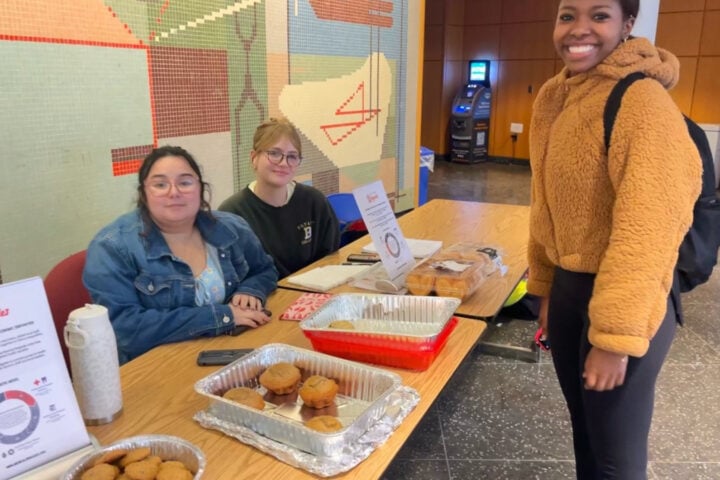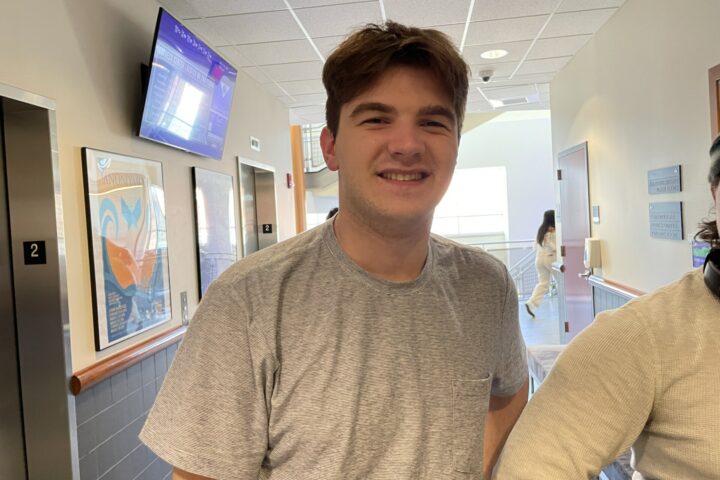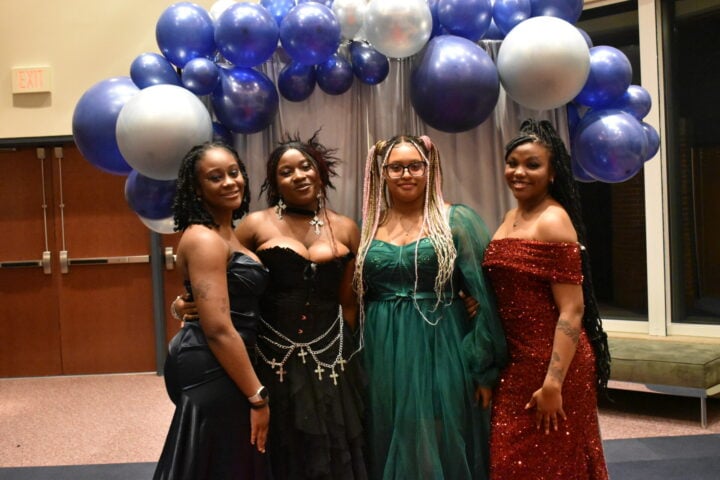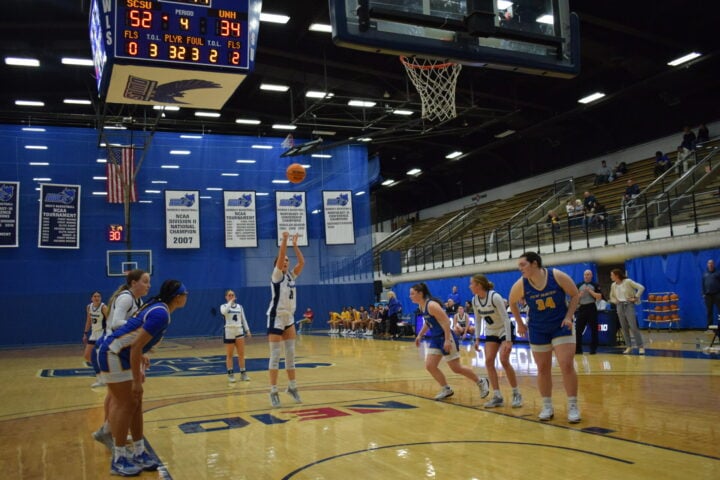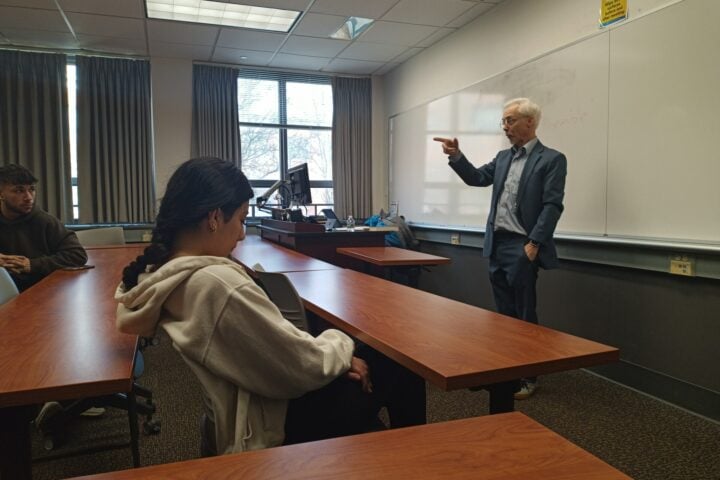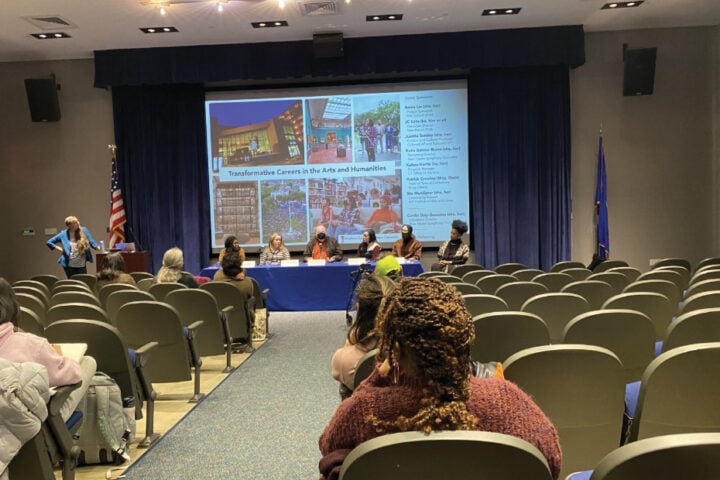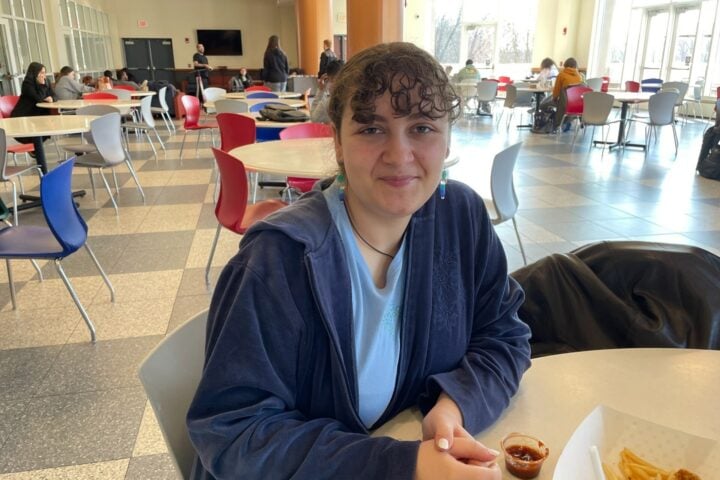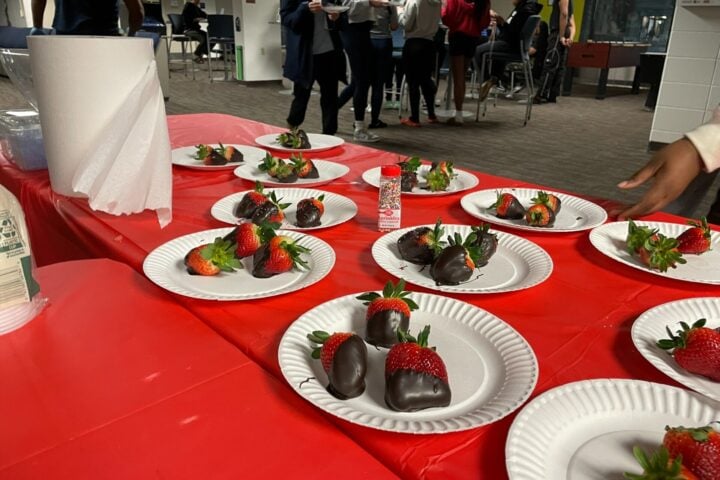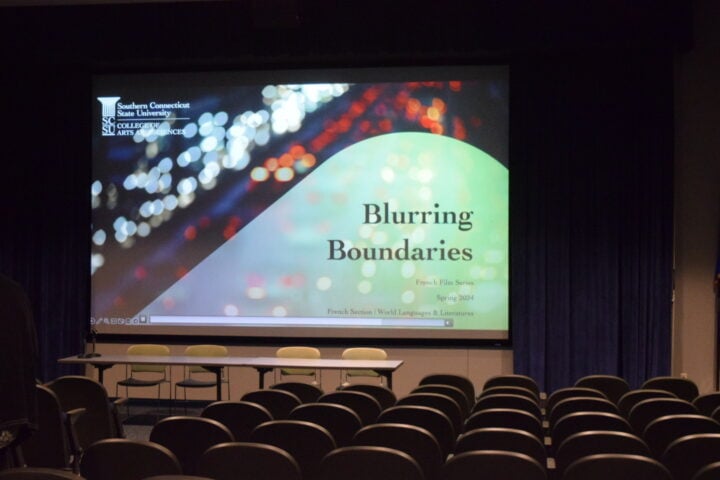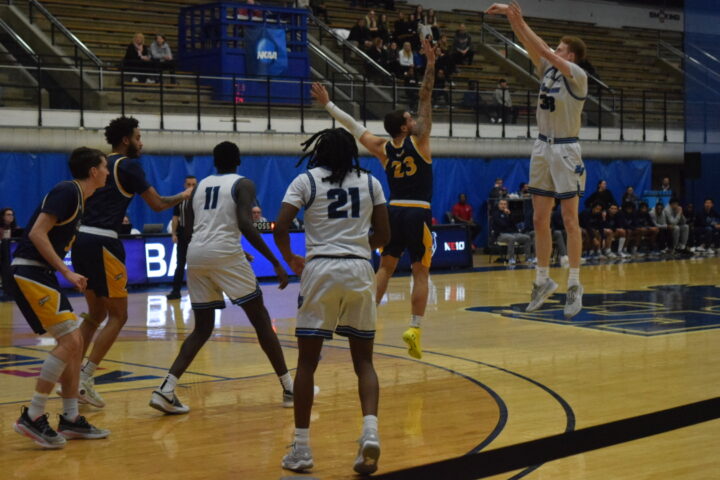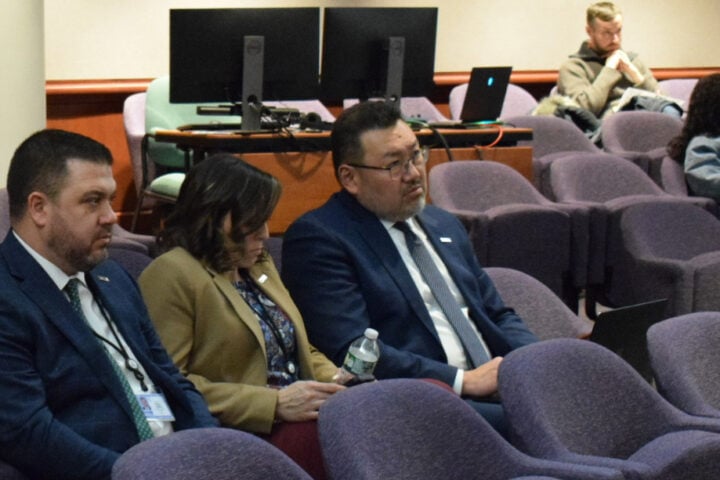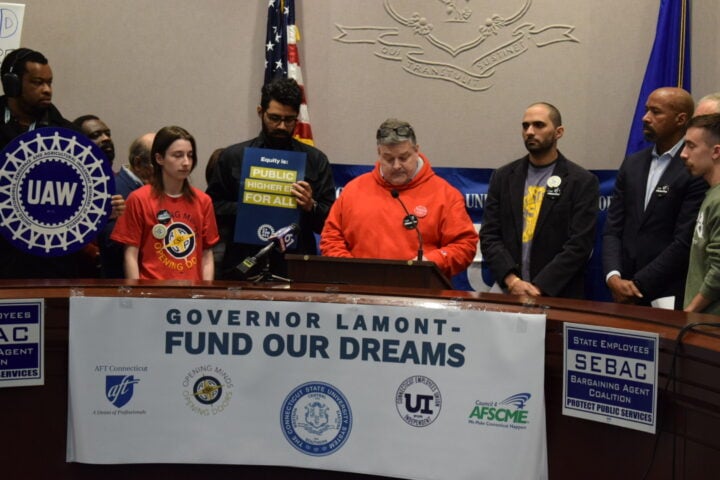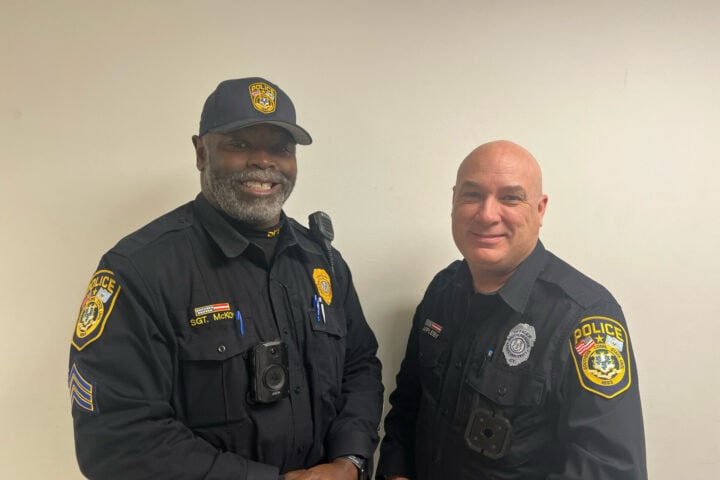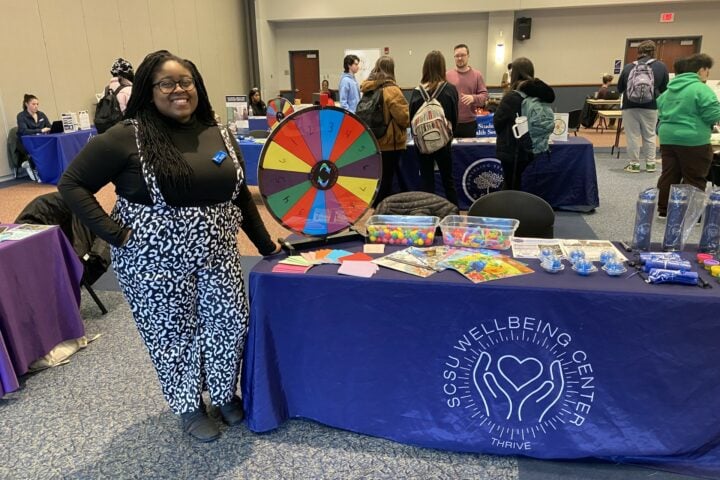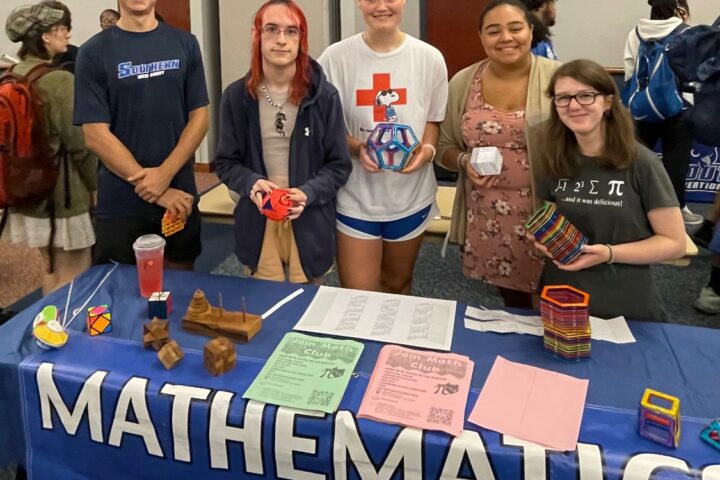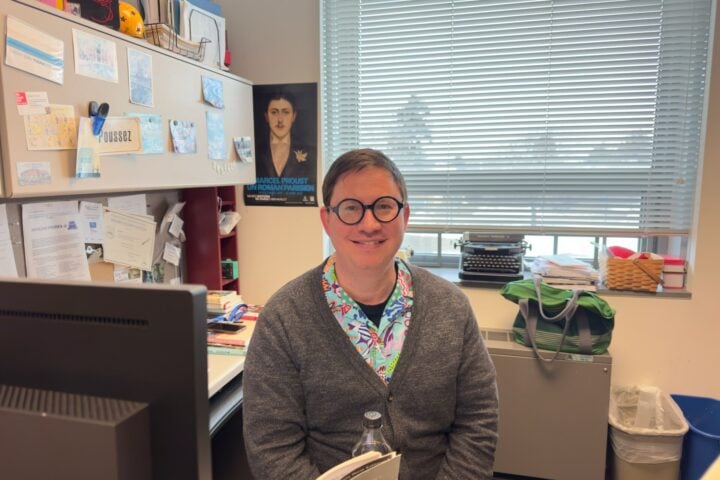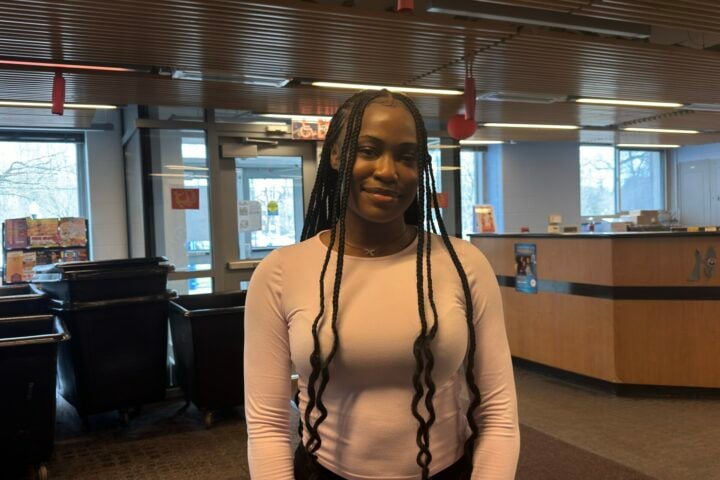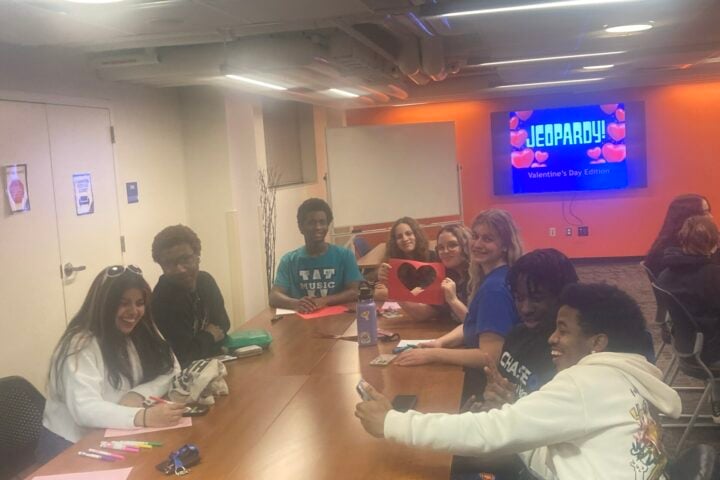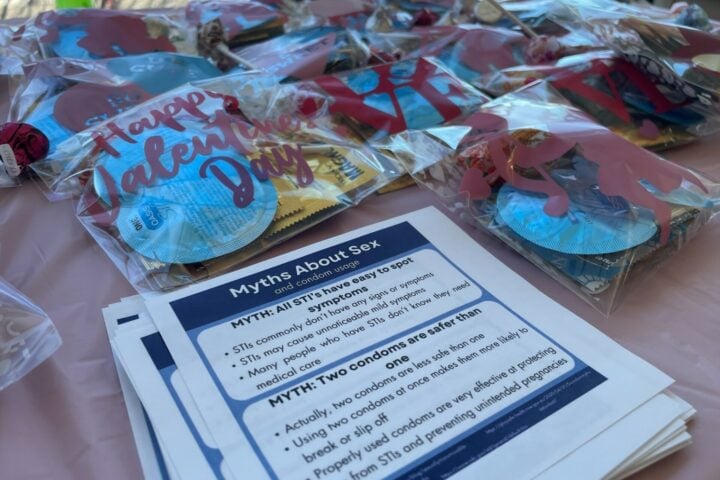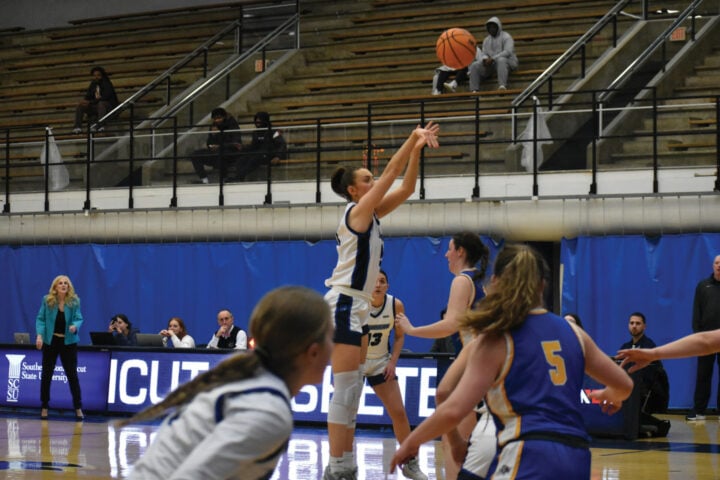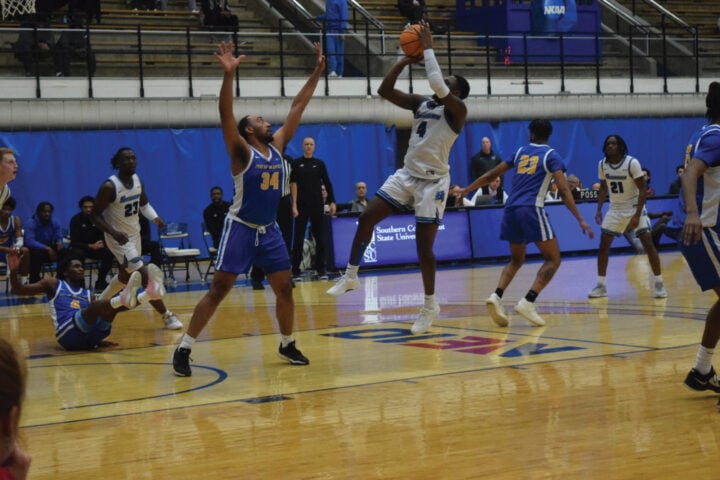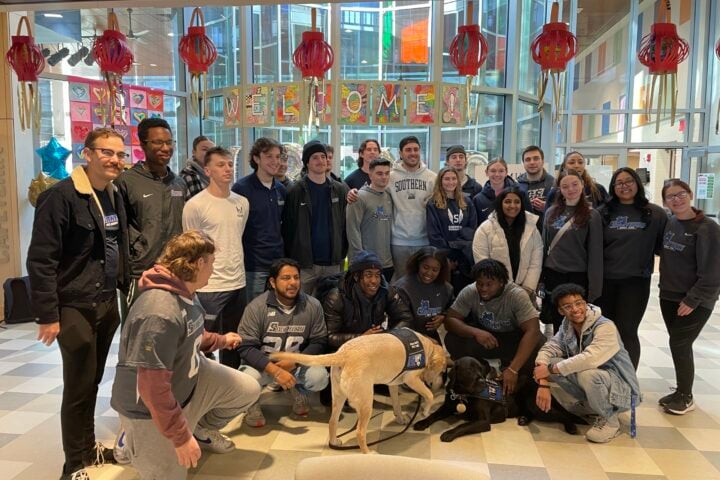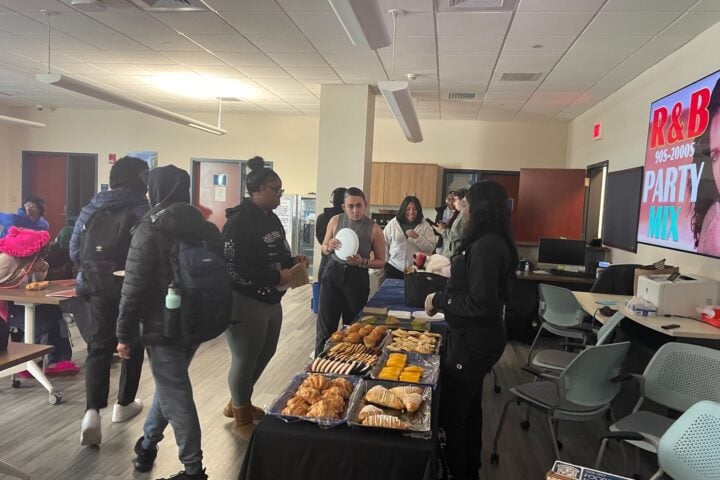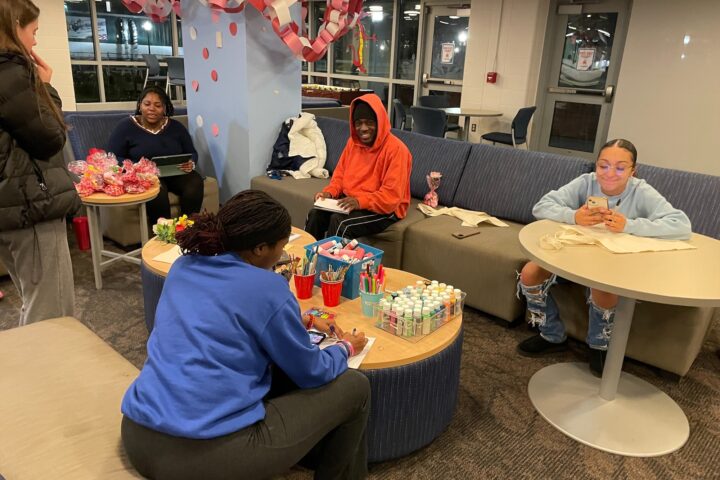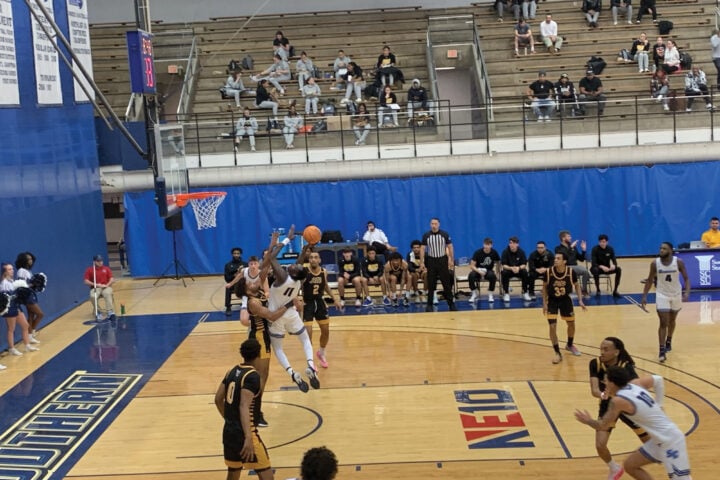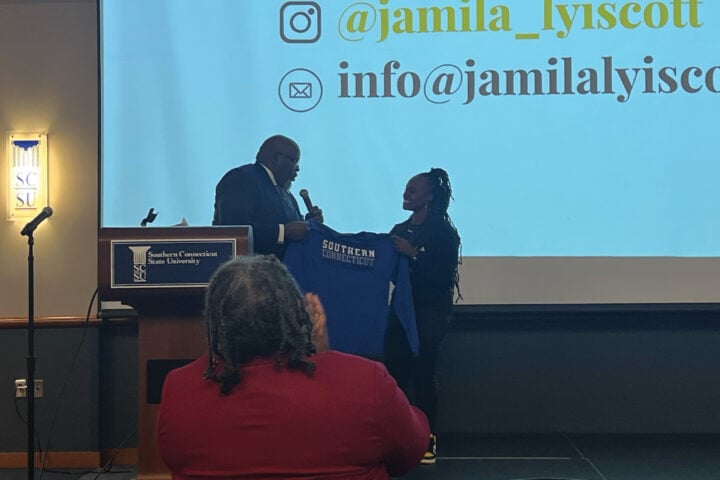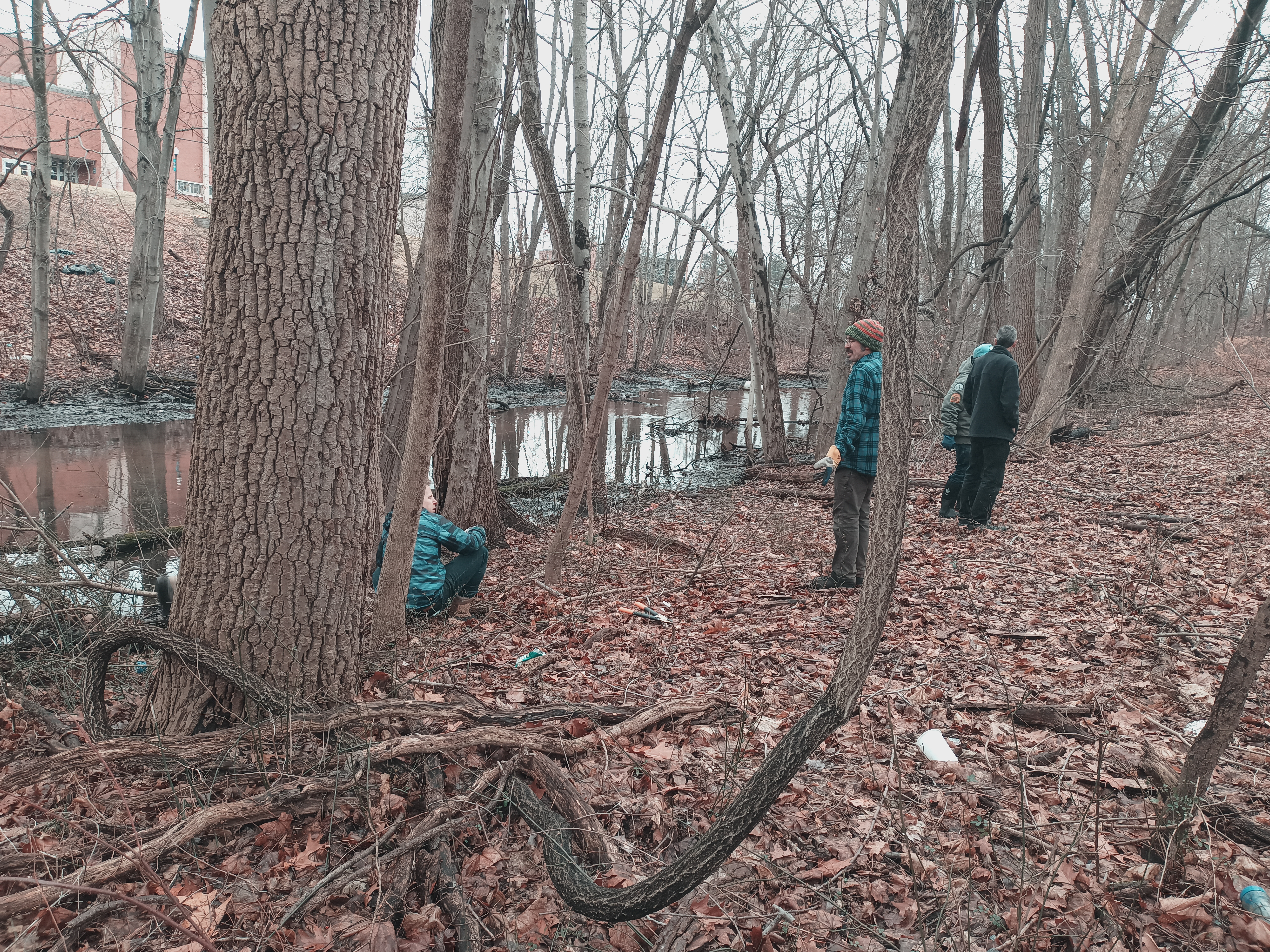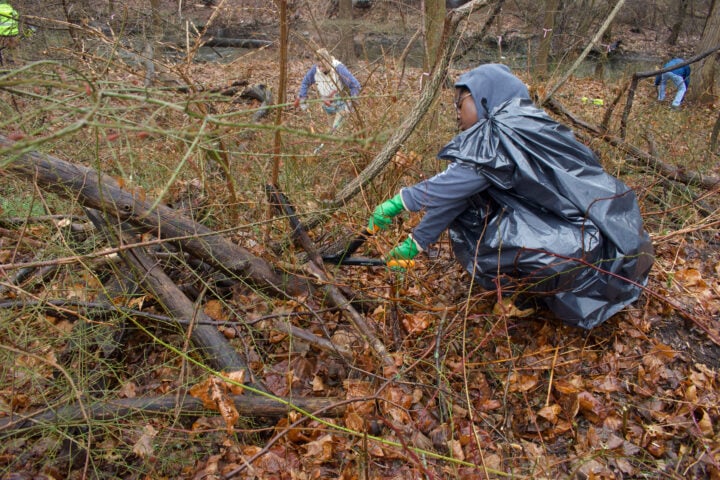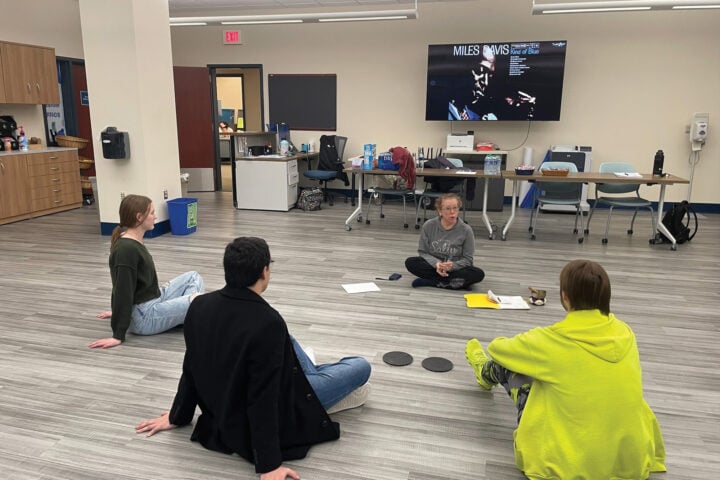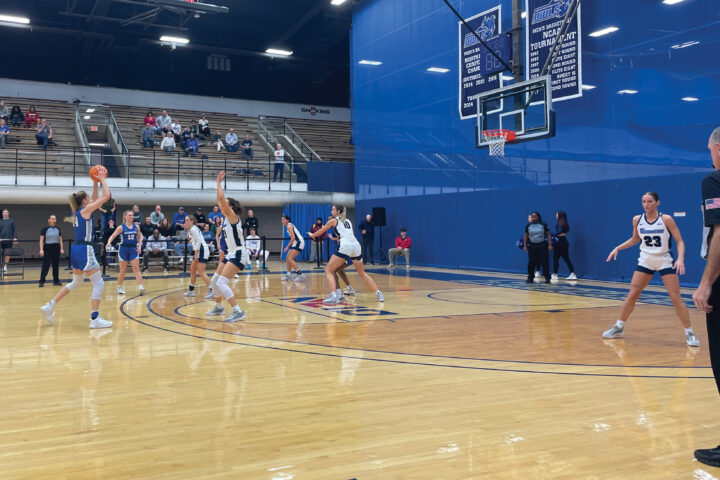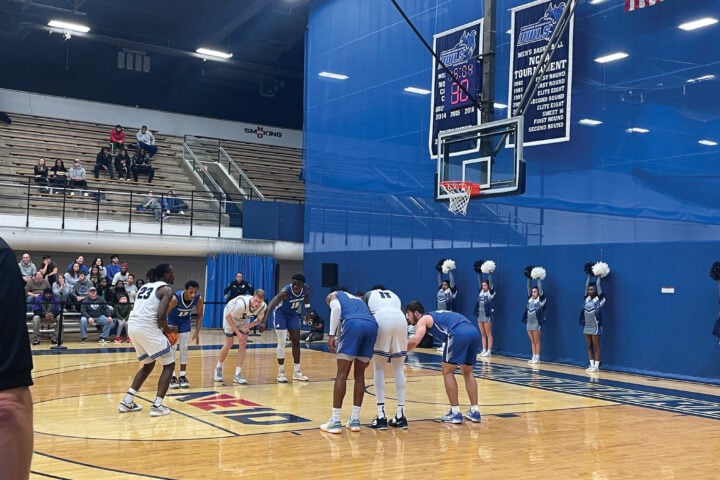Jene Thomas – General Assignment Reporter
As simple as a person’s daily activities may seem, public health junior Brittany Reshotnik said just taking a hot shower for a long time could potentially affect the skin.
“You want to try to limit bath time and take a warm shower or bath instead of a hot shower because it strips essential oils from your skin and you really need those oils to keep your skin moisturized,” she said.
Reshotnik stood beside fellow public health majors Carly Greatorex, senior, and Traianna Staton to give a presentation of maintaining healthy skin at the Protect the Skin You’re In event hosted in Chase Hall on April 7 at 8 p.m., sponsored by the Public Health Department. The event led a discussion on the three major ways to protect the skin: treating the skin gently, refraining from smoking and protecting the skin from the sun, even in the winter.
“You need to protect your skin from the sun exposure all year round, not just during the summer months or at the beach,” said Staton. “UV rays can reach you on cloudy days. UV rays reflect off the surfaces like water, cement, sand and snow.”
As desirable as a tan may be, Staton said a tan is a result of injury to the skin. The overexposure of the ultraviolet rays causes the melanin in skin to produce more pigment, which can result in burning. Though not directly in the sun, tanning beds create an even greater risk to skin because of the high concentration of UV rays at a closer distance to the skin.
Prevention methods offered were using sunscreen with at least an SPF of 15, wearing sunglasses and hats, as well as staying in the shade outside during the sun’s peak hours of 10 a.m. to 4 p.m. Some cosmetics like Bare Minerals also include sunblock protection.
According to Greatorex, treating the skin gently with the prevention methods, reduces the risk of developing the three most common types of skin cancers: Melanoma, Basal Cell and Squamous. Those with fair skin types, freckles and blue or green eyes are at the most risk of overexposure and were urged to use more protection.
Aside from staying out in the sun too long or not moisturizing the skin enough, smoking is a year round problem that has everlasting effects on the skin. With side-by-side pictures of a woman who smokes vs. a non-smoker, the audience could see the cracked skin of the smoker.
“This happens because every time you smoke, your body is getting exposed to over 4000 toxins,” said Reshotnik.
Those toxins narrow the blood vessels in the epidermis, the outer skin layer, decreasing blood flow in the skin.
The facts throughout the presentation were later used in a jeopardy-style game where the crowd was divided in groups of three or four. Each group spun a wheel that pointed to a color. Each color coincided with a bag with different topics: hot to protect the skin (orange), skin care (blue), sun and your skin (green) and a random group (red). The winners were awarded gift bags of skin protection.
Though the vast population of those who attended were females, aside from the four male students, the lobby of Chase was full. A majority of them were enrolled in one of the public health classes.
“I came for a class but it seemed pretty cool,” said Dena Miccinello, a sophomore public health major.
Attendees who remained throughout the entire presentation were welcome to complimentary pizza and soda. As a parting gift, all those who attended the event were given little gift bags that contained a sample of aloe, lollipops and informational cards about living smoke free.
“Remember, a little prevention will keep you from feeling the tension,” Greatorex said.
Photo Credit: Jene Thomas
























